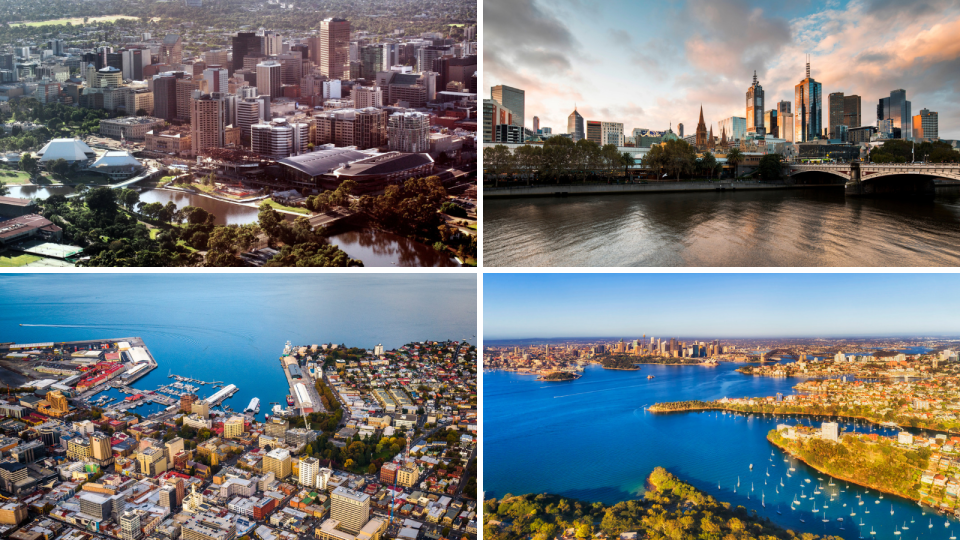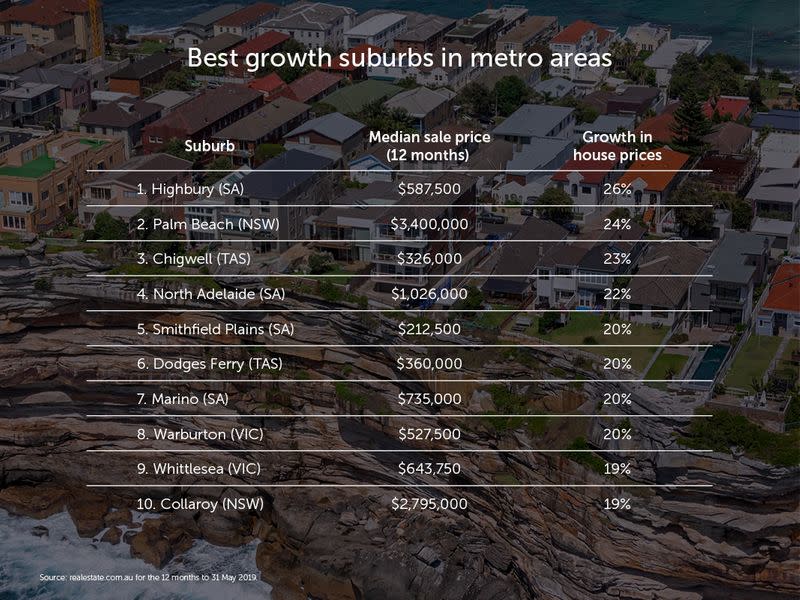10 Aussie suburbs that saw double-digit property price growth

Property prices have been declining since 2017 – but there have been some suburbs in a few key metro Australian cities that have bucked the downwards trend.
According to realestate.com.au, the top 10 suburbs for house price growth in the 12 months to the end of May 2019 have all been clustered in Adelaide, Sydney, Hobart and Melbourne.
Adelaide’s Highbury topped the list, with a whopping 26 per cent.
This was followed by Palm Beach in Sydney at 24 per cent and Hobart’s Chigwell at 23 per cent.
At the bottom of the list was Sydney’s Collaroy, but even this suburb saw 19 per cent growth, a remarkable figure in a city that saw stratospheric falls in house prices.
Among the top 10, four suburbs were from Adelaide, with two each in Sydney, Hobart, and Melbourne.
But the median sale prices across the last 12 months varied significantly: Smithfield Plains in Adelaide saw median sales prices of just $212,000, while the average price of Palm Beach properties hovered around $3.4 million.
Here’s the full list:

No suburbs in the ACT, Northern Territories, Queensland or Western Australia made the cut, with realestate.com.au chief economist Nerida Conisbee saying this was indicative of broader activity in the markets of those capital cities.
“They are just generally a lot weaker markets, especially compared to Adelaide and Hobart,” she told realestate.com.au.
“WA and NT are very skewed markets… Brisbane has a lot of stability but not a lot of price growth; it just moves along.”
Related story: Bad news for parents: Sydney property too expensive, granny flat trend booms
Related story: Auction rates jump to strongest in a year, following the RBA’s record-breaking rate cut
Related story: NOW is the best time to buy Australian property since 2016
Pushing up prices in Adelaide is the increased access to more affordable housing, she added.
“Adelaide’s been going well for quite some time. A lot of it has to do with the fact the city’s economy is doing well.
“Rental growth has been happening for a while; people are moving to Adelaide for jobs and investors are very interested,” Conisbe said.
“Owner-occupiers and investors have both been seeing it as far more appealing than cities like Sydney and Melbourne. There’s demand and you can still buy in these suburbs, it’s far cheaper.”
Meanwhile, Hobart used to be “very cheap” but isn’t anymore, and buyers are moving to other suburbs.
“In Melbourne, outer suburban areas are offering big homes on big blocks at quite an affordable price.
“A lot of those areas won’t likely continue to see that kind of price growth; it’s just reflective of some high demand,” Conisbee concluded.
Make your money work with Yahoo Finance’s daily newsletter. Sign up here and stay on top of the latest money, news and tech news.

 Yahoo Finance
Yahoo Finance 
